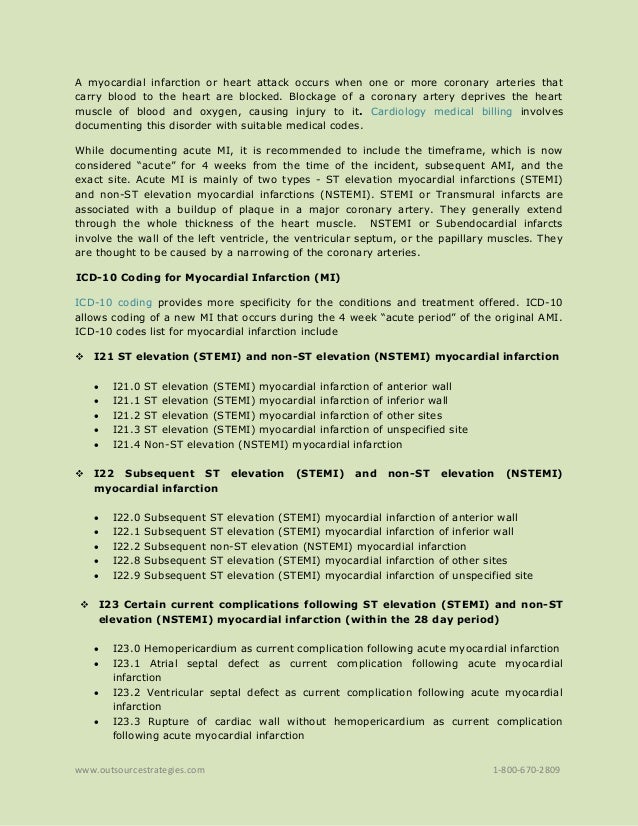
In Australia, modified text was introduced to ICD-10-AM in 2004 indicating that STEMI was congruous with transmural MI codes, and NSTEMI with subendocardial MI codes. In contrast, a Canadian study demonstrated very high agreement using kappa measures. In Finland, the sensitivity and specificity of STEMI ICD-10 codes compared with clinical data was 69% and 78% respectively, and for NSTEMI, 45% and 81%. The few studies validating these codes have shown a wide range of coding accuracy. With changes to the clinical classification of MI, ICD-10 versions throughout the world have been adapted at varying times to include codes for STEMI and NSTEMI. The International Classification of Diseases (ICD) codes for MI in ICD-9 and early ICD-10 editions classified MI as transmural or subendocardial infarctions. There are differences in risk stratification, clinical management and outcomes between NSTEMI and STEMI, therefore it is essential to accurately identify them for monitoring, quality assurance and clinical research purposes.


The introduction of cardiac troponin (cTn) assays has contributed to an increase in non-ST-segment elevation MI (NSTEMI) rates, with a corresponding decrease in the diagnosis of unstable angina (UA). These studies commonly use linked hospitalisation data but typically focus on overall MI rates. Studies of trends in MI are essential for disease monitoring and indicate changes in case severity, treatment and prevention. Myocardial infarction (MI) is a major contributor to the burden of disease globally.


 0 kommentar(er)
0 kommentar(er)
